Will 2022 Be the Year they Tell Us to Take Up Cannibalism?
Soylent Green and Our Cannibalistic Acquiescence
Even if you haven’t seen Soylent Green (1973), chances are that you know the line at the end spoken by an anguished Charlton Heston, “Soylent Green is people!” The shocking moment in the film has been a prelude of things to come and a modern era starting point for our conditioning and acceptance of cannibalism as a way of life.
The future depicted in Soylent Green takes place in 2022. Yes, the current year, the one where we face impending recession and have seen supply chain crisis, food shortages, baby formula disappearing from shelves, food processing plants ‘mysteriously’ burning to the ground, elitists telling us to eat bugs, lunatics demanding the need for full term and post-birth abortion—we’re seeing the perfect storm scenario that will have the next star of Progressivism calling for cannibalism to ‘save’ us. Just how close are we to the nightmare world served up in this film?
Films with cannibalistic themes have long been a part of horror and exploitation cinema, but Soylent Green assisted in transforming the taboo into something of necessity and eventually something ‘cool’ or ‘artistic’, as we’ll see. There have been movies of survival in the vein of the Donner Party or the soccer team whose plane crash left them stranded in the Andes where the eating of human flesh prevented their imminent death, but these were temporary situations caused by extenuating circumstances. Soylent Green essentially domesticates cannibalism, but in a way where the population as well as the audience has no choice, but to accept it. The suffix lent of soylent, is from the Latin meaning “having a quantity of or being full of”. Soylent then clearly means ‘abundance of soy’. So when the end credits roll, an audience viewing today might only think, ‘It sucks that in the future we might have to eat people. But if that’s all there is, at least there’s plenty of soy in those crackers.’
Go Green! Eat Green!
Soylent Green was released during a time of Green Agenda percolation. From the outset we have been made to accept that anything with the word ‘green’ attached to it is good for us. The environmental organization Greenpeace was founded in 1971 with an agenda focused on climate change, deforestation, and other environmental concerns. Just two years later we saw the release of Soylent Green which I imagine by then was able to easily establish itself into our subconscious minds as being something beneficial to both us and to the environment, regardless of how horribly it might be presented in the movie. In the Greenpeace saturation campaigns of the 70s, we were sold on their green future and in the post-apocalyptic world of Soylent Green, we are not only sold on their green product, but we need it.
Even Kermit the frog was in on the Green Agenda! The well known song Being Green was notably sung by Kermit and written in 1970. The lyrics have sometimes been interpreted to be about race, but the environmental connections are undeniable, “Green can be big, like a mountain, or important, like a river, or tall like a tree." In 2004, Kermit’s green diddy was used in a commercial for the ‘environmentally friendly’ Ford Escape Hybrid, in which the muppet voices concern over the environment and says, "I guess sometimes it is easy being green." confirming that this frog is not only a puppet, but an activist as well. How amazingly poetic that in the era of puppet leaders, actual puppets and activism should come together so literally and not just metaphorically.
The Soylent Green product is not unlike countless other products we might find on our grocery storeshelves one of which is actually named Soylent. These products often have labels that claim ‘Real Cheese’, ‘Natural Flavors’, ‘Organic’, etc.—these questionable selling points might sound good, but while they loudly hype their supposed advantages, what are they not telling us? It’s easy to be glamoured by nice packaging, but we are continuously pressured to engage in this deceptive form of marketing even when we try to make sense of undecipherable ingredients lists or when we agree to have our privacy violated because we don’t want to read or can’t fully understand lengthy Terms of Service agreements. The point is that we never really know what we’re getting.
In Soylent Green, the distinctions made between the haves and have-nots are clear, literally. The elite live in clean, fancy apartments and the scenes depicted there have a clarity that is absent outside of their decadent bubbles where everyone else wears rags and masks in a feeble attempt to avoid breathing the filthy air.
Naturally, the few who have access to real food, scarce as it is, are the elite. Everyone else exists in a state of extreme poverty and are deprived of even the most basic necessities. The food provided to the impoverished population comes in the form of different colored crackers, Thursday being the day that Soylent Green is stingily distributed. Maybe now it’s more obvious where the 90s punk band Green Day gets its name. We’re told that the crackers that have become the diet staple of the populace contain ‘real soy’ which might actually sound comforting to soy cultists or those who have jumped headfirst into ‘Impossible’-type eating habits. Whatever the trend or direction that marketing takes, there remains an agenda whether it is guided by soy or labels of ‘slimming’, ‘meatless’, ‘plant-based’ or whatever other term that may be conceived to tell us how to improve our lives, shame us, guilt trip us or ‘save the planet’.
Soylent Green may only be a science fiction film from the 70s, but it’s also a primer, a wannabe of predictive programming that envisions this year—the year 2022 as a mucky, green-tinged, smog-infused place where overpopulation, scarcity and mask-wearing are the hallmarks of life. “Poisoned water has polluted the soil, decimated plant and animal life.” says the old timer played by Edward G. Robinson who could represent the pre-internet born viewing audience who recalls first hand a harmonious world of abundance and a time when we were blessed with more reason and not crippled by fear and wokeness. His reminiscing has us momentarily contemplating a life to be grateful for, but in the next breath we’re being mentally prepared to eat crackers made of humans and left to ponder what life might be like if more population control devices were put into place. Late in the film, we learn that in addition to being a pro-cannibal society, this dystopian world prides itself on being humanitarian by providing death services that appeal to our deprived senses.
If the Soylent Green cracker existed in today's 2022, it would undoubtedly come with a booster shot touted by the World Economic Forum and approved by the World Health Organization, leaving no doubt that the compliant people of the world would be falling over themselves to be the first to praise cannibalism while puffing themselves up as saviors of the world.
Our psychology has deteriorated since the epic years of ‘70s-era Dystopian Cinema. We now have fake burgers made to taste like meat and to even ooze blood-like juices to comfort the people who eat these products into the illusion that even though they chose a plant-based burger, they can still imagine that they’re eating real meat. What kind of messed up reverse psychology is it that some vegetarians want to lie to themselves that they are eating meat? The psychological trickery is not far removed from a bulimic who vomits after eating to stay thin. It might work, but there’s just something off about it and the blurry lines of reality that it creates.
Is This Supposed to Be Funny??
I don’t think the idea of cannibalism disgusts us anymore. Sure, plenty are revolted at the idea, but since Soylent Green we have seen countless cannibal comedies like Motel Hell and Slither (which I quite like) that have pushed the boundaries of the taboo from comedy toward domesticity and faux sophistication. In Joe Dante’s The ‘Burbs, a man imagines himself at an demonic ritual as the main course laid out on an oversized Bar-B-Q grill and in Parents, the opening scenes depict a clean-cut cannibal couple doing some similar outdoor grilling, creating a perverse reimagining of American Gothic normality. Of course Parents and The ‘Burbs were played for laughs, but there were none to actually be had in either of these movies. But it’s the taming of the subject that is important here and who better to make light of ritualistic cannibalism than the man that Hollywood and the media have determined to be the best guy in the world—the good neighbor, best friend, safe, trustworthy, life saver, clear thinking, intelligent hero—Tom Hanks. Hanks has done more than his share in contributing to our conditioning and it remains to be seen how deep our programming has gone if some of the darker rumblings out of Hollywood were ever to emerge.
The level of demonic programming has reached heights never before seen and we’ve gotten to where a show like Santa Clarita Diet glorifies cannibalism and makes it oh so sexy. Here Drew Barrymore becomes the undead and begins to eat people, but instead of the ‘traditional’ zombie with rotting flesh and bad complexion, she thrives, has more energy and it even improves her confidence. She is beautiful and successful all because of cannibalism!
If It’s Good Enough For Our Designated Idols
New World Order puppet Katy Perry knows a thing or two about cannibalism and we can learn a lot by paying attention to the social engineering programming of her music videos. The video for the song Bon Appetit is an extremely disturbing glamorized confirmation of pro-cannibalism complete with elitist occult ritual overtones and overt sexuality as the singer’s body is being prepped, basted, cooked and presented for consumption. Cannibalism here is presented as a high end dining experience for sophisticates and something to be understood by elites with discerning and discriminating tastes. This elitist message is also explored in the fascinating film Dumplings, which incorporates human fetuses into dumplings that reverse the aging process, a delicacy offered only to select clientele. This is a luxury, like art, that requires big money and upper echelon exclusivity to gain entry to this level of refinement. The ritualistic overtones of Perry’s Bon Appetit include a dark, secret dining room where some are blindfolded a la occult-tinged Rothschild/Illuminati Eyes Wide Shut-type parties. The video implies that this is how they do and maybe if we had the money and the proper connections, we might be able to join their sophisticated ranks too. No, thanks.
The system that has created this pro-cannibalist movement does not hide behind symbolism or euphemisms when it comes to the consumption of human flesh. Long suffering Kesha came to my attention only when she attempted to legally extract herself from the enslavement of her handlers, but in the wake of her much hyped mental breakdowns the public saw that she was firmly put back in her place with the release of her song Cannibal where she admits that she drinks the blood of boys. Not to be outdone, the talented if overtly Satanic Billie Eilish also has admitted publicly to being a blood drinker, blaming it on anemia. And higher up the food chain, Lady Gaga, like Madonna, can tell us that she is a living piece of art and that anything she does is just creative expression, but the video of her covered in blood and eating a human heart looks only like the work of a high paid pawn operating within the Beast System than the work of a true artist.
They Keep Telling Us It’s Art
Art is a much larger topic that deserves to be explored on its own, but for now let’s just say that I struggle to find much that appeals to me anymore that isn’t steeped in demoralizing content, shock value (which no longer exists) and just ugly work that has nothing to do with raising the spirit or creating beauty. Art has become hideous and wokeness has helped destroy it. In this climate of ‘anything is art if I say it is’, we have High Priestess of the dark arts and art world royalty, Marina Abramovic.
Abramovic gained notoriety outside of the art world bubble in 2016 after Wikileaks released John Podesta’s damning and grotesque emails. In one memorable email, the Serbian witch asked Tony Podesta, “I am so looking forward to the Spirit Cooking dinner at my place. Do you think you will be able to let me know if your brother (John) is joining?” The ‘Spirit Cooking’ Abramovic refers to is an occult ritual posing as art that incorporates incantations, blood, urine and other bodily fluids. At the time, the Podesta art collection was put under scrutiny and the world saw that their ‘favorite’ art was of a distinctly cruel, cannibalistic and pedophilic nature; one sculpture that hangs in the foyer of Tony Podesta’s home was a replica of a decapitated body at a Jeffrey Dahmer crime scene. Their art preferences are so vibrationally evil, I don’t even want to show an example.
Besides Abramovic’s blood rituals and performance art that I believe is designed in part to extract lifeforce energy from those who are unfortunate enough to encounter it. Abramovic is also well known for the inordinate number of celebrities who seem to worship her and treat her as a goddess. The cannibalistic rituals that she presents as performative ‘art’ are well attended by cultured snobs eager to participate in the depravity that the art world elevates to a level of high art.
At the 2011 Museum of Contemporary Art Gala, Abramovic in morgue attendant attire, and Debbie Harry performed a ritual in which they butchered very life-like models that were designed to look like the occultist and the singer. These edible creations were then hacked up and eaten on site, giving us another example of consuming the self and the human as a sustainable product like the Soylent Green cracker. How far we’ve come from the horrified realization of an innocuous-looking cracker to the real horror of this.
I don’t mean to suggest that Abramovic is not an artist, she is. She’s an artist of the dark arts. It’s easy to call it performance because occult rituals are performative, but like the deceptive labels we see on our foods, are we really getting what we think we are with Marina Abramovic? Would it not be more accurate and honest if she were to promote her next work as a public ritual geared toward fulfilling some unnamed purpose that manipulates the will of her audience in order to obtain her desires?
As we look at the evolution of cannibalism, it’s obvious that it’s been made to be more palatable (pardon the pun), but for what purpose? As we’ve seen in the proliferation of zombie movies over the past four or five decades, it’s always been us who were the cannibals, but today we’ve cleaned up. We’ve taken our love of human flesh out of the Dahmer kitchen and put it into art galleries and have visualized it as a fine dining experience. Once the psychological mind fuck is completed and we enter the next phase of acceptance, will we be like Charlton Heston at the end of Soylent Green, disgusted with the discovery or will we just go along with it and find some justification or twisted morality that will make us feel virtuous for being a cannibal?
And finally, I will leave you with this nugget. Based on the definition of “cracker” from the Urban Dictionary, poor white men have always been crackers.
Crackers were poor white folk who lived in the south during the antebellum era. Given their name because of their staple diet of crack-corn, crackers were often hired by plantation owners in order to replace a slave in dangerous jobs. The high prices of slaves during the 1830s and 40s made It efficient to use a cracker rather than a slave. If a planter lost or injured a slave he would be pressed to buy another slave, but if the cracker got injured or died, financially, the planter would have been unaffected. Crackers had a very low standard of living. Today, cracker is often used as a derogatory term for a white person. It implies a person who lives in the utmost worst conditions and a person who no one really cares about.
How wonderful that in a Soylent Green world we might find true equality by all being crackers! Well, I suppose just so long as they make those crackers all the same color because if they don’t someone will surely say that there is no ‘equity’ if choice was made available to us. +


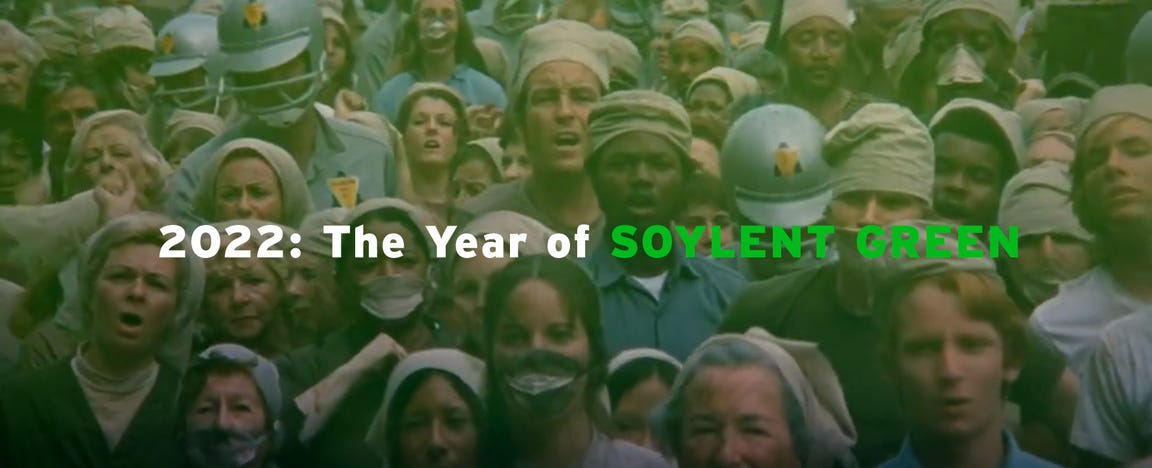
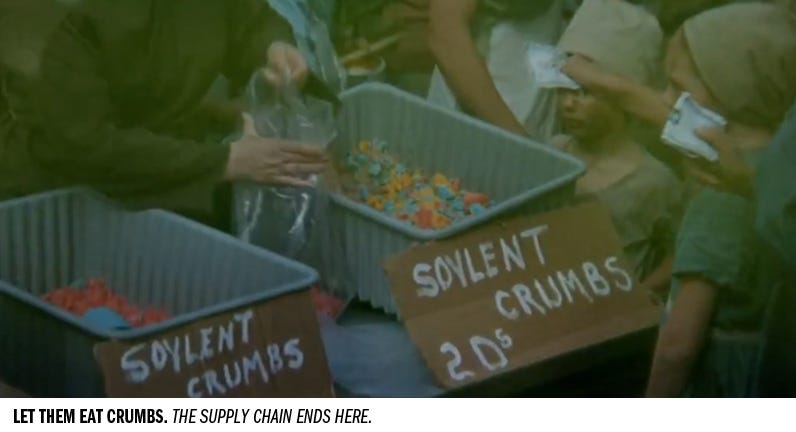
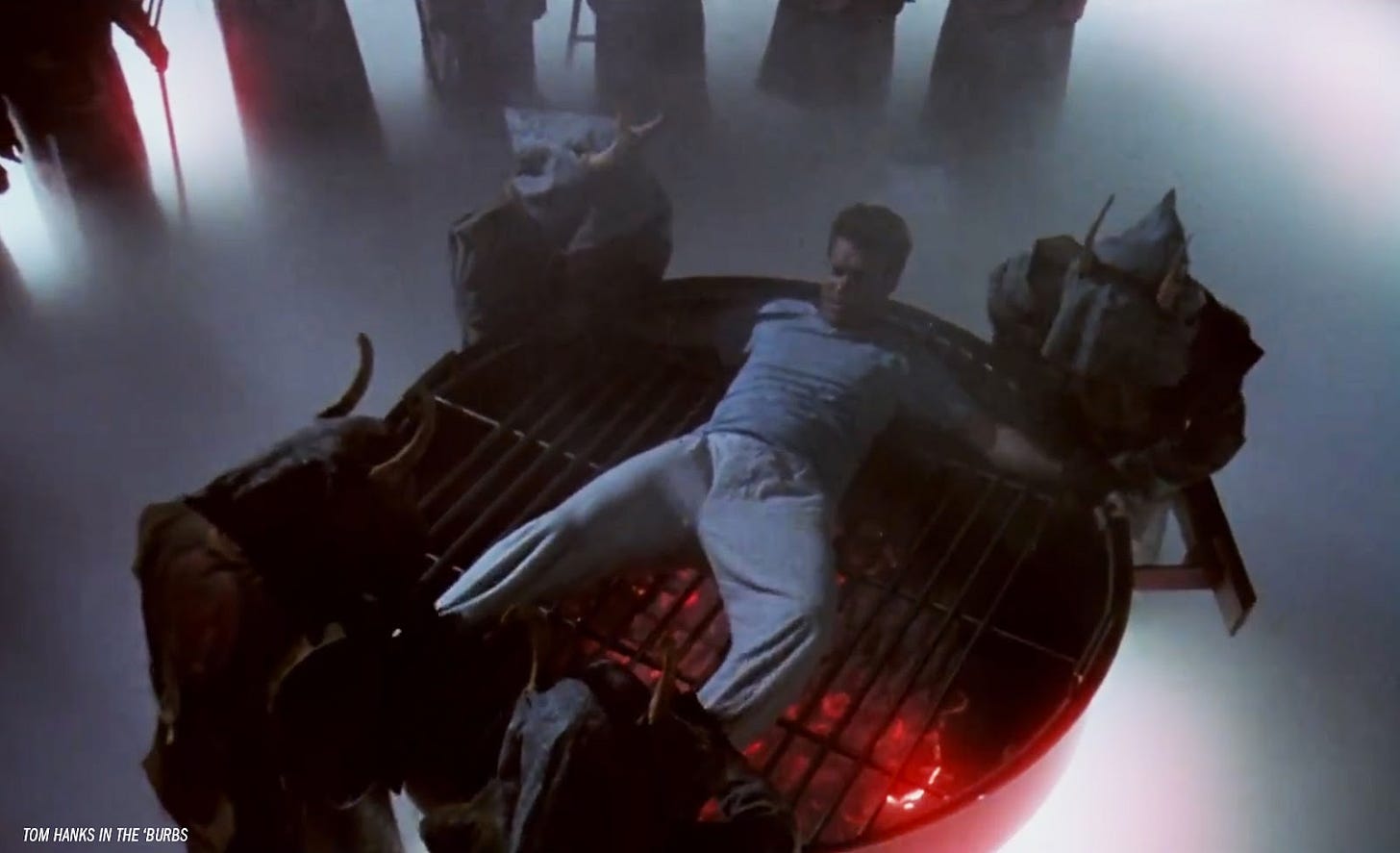


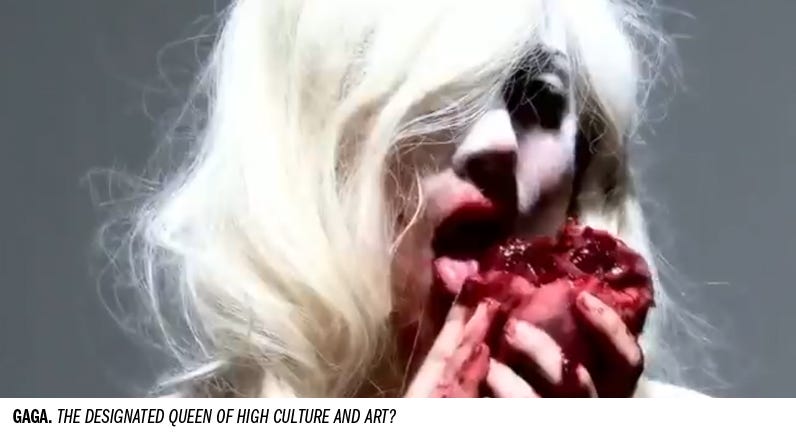
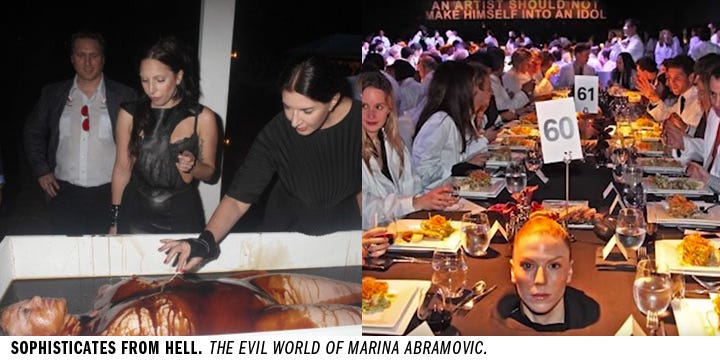

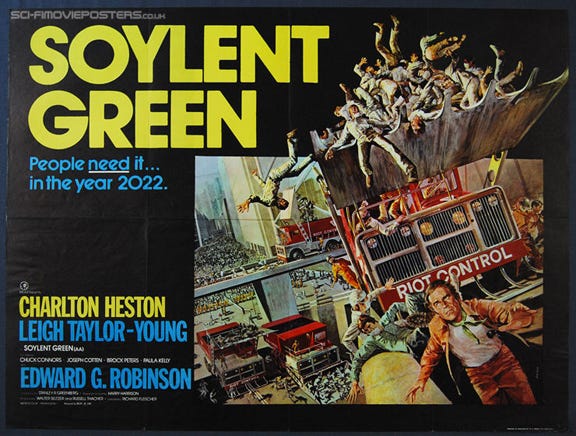
Looking forward to reading this one as well I started reading it and then oddly enough I could not find it again. My older sister loved this movie back in the 70s. Glad I found it so I can finish reading